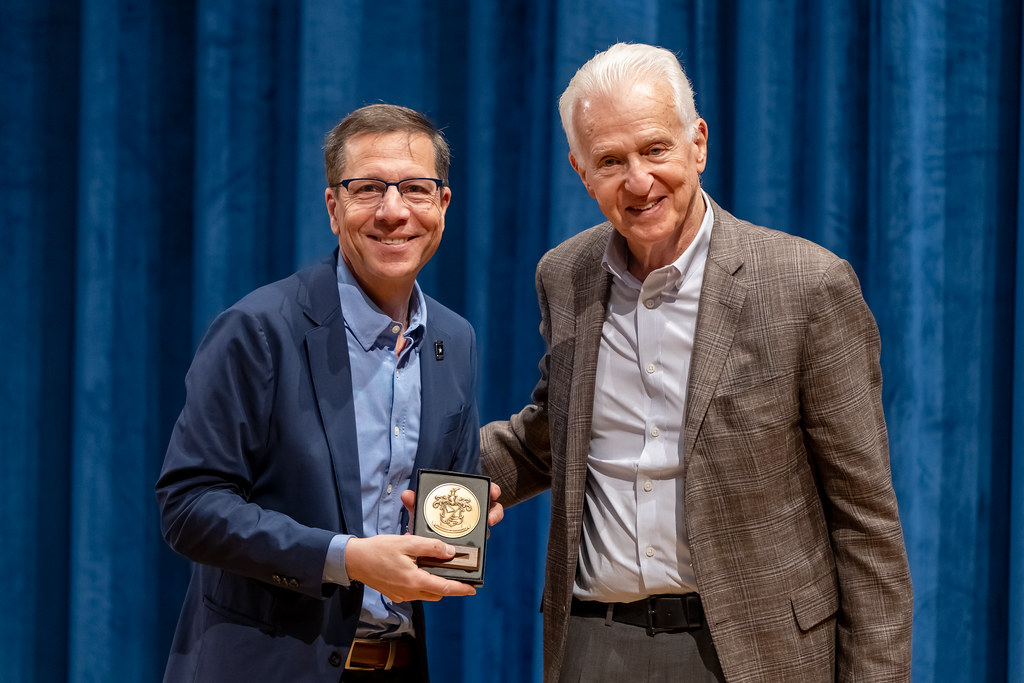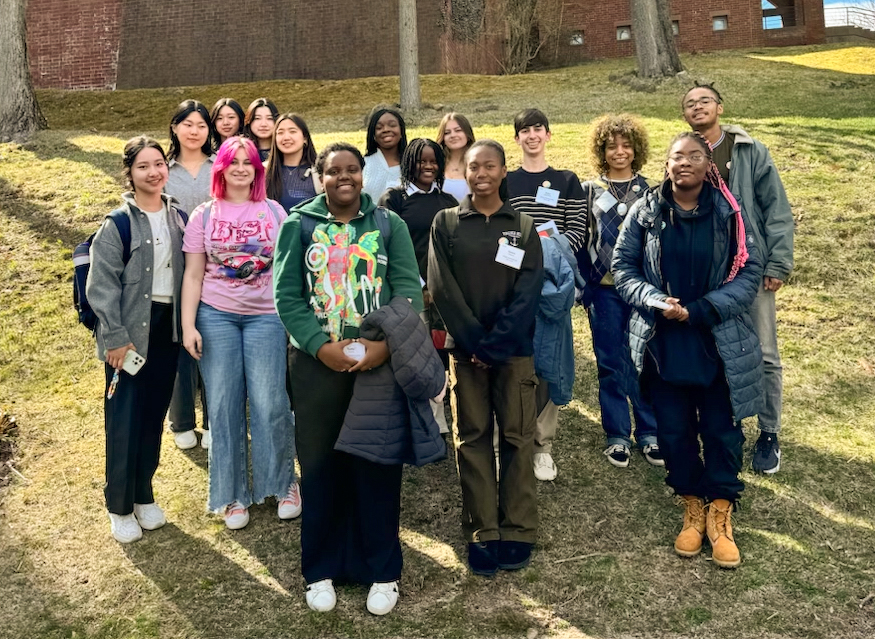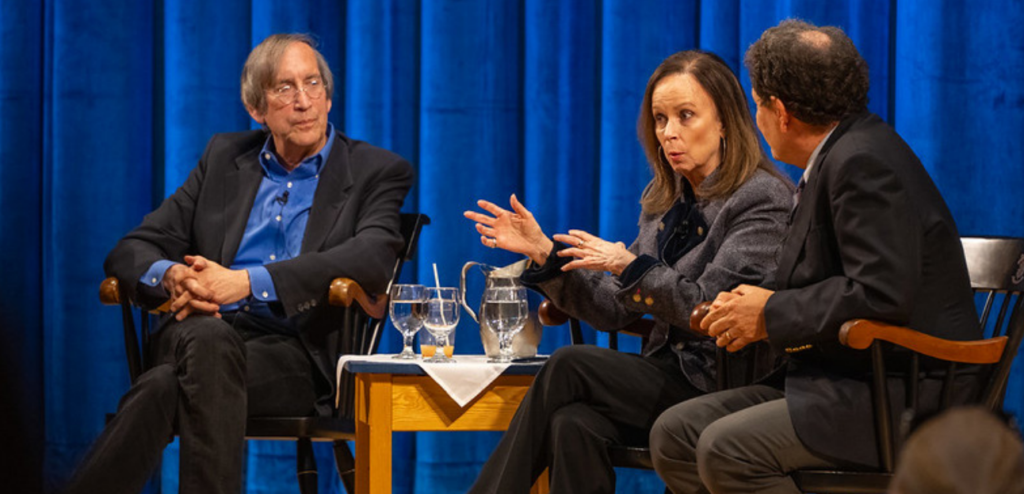Among the many activities that Choate students participated in over spring break were three major school-sponsored trips: one to Costa Rica (March 2 to March 9), one to Arizona (March 2 to March 12), and one to Mexico (March 9 to March 16). The Costa Rica trip focused on scientific research, the Arizona trip on social justice, and the Mexico trip on community service.
For the trip to Costa Rica, Dr. Selena Gell, Dr. Christopher Hogue, Dr. Heather York, and ten students stayed in Bijagual, Costa Rica, an ecological preserve located a few hours away from San José. During the day, students worked on a massive scavenger hunt. They searched for 140 different items, including different species native to Costa Rica.
During the night, students captured bats and used Dr. York’s field guide to identify various characteristics of the bats. “Some of them were pregnant, and you could feel the baby bones inside the bat’s abdomen, which was really cool,” said Hannah Huddleston ’19.
Abby Strong ’19 emphasized the authenticity of the field research. She said, “It was just so close to what we were studying. We were right in there, and there was no escape from it — we slept under mosquito nets.”
Dr. Hogue was excited to give his students a unique experience outside the classroom: “It’s very different looking at something that’s in a lab that lives in a cage or a petri dish versus something living in hundreds of acres of untouched wilderness. I think it was important to show the variety of professional science research that exists out there.” He hopes that these trips can extend to other types of biomes.
For the Arizona trip, Ms. Kolina Koleva, Ms. Melissa Koomson, Mr. Ben Small, and eight students stayed in Tucson, Arizona, but traveled to various places nearby for a wide range of activities. They participated in numerous discussions and engaged with several speakers, learning more about immigration and border patrol.
The group had the chance to travel to Nogales, Arizona, a town that straddles Mexico and the United States, and spent one afternoon on the Mexican side of the town. Mr. Small said, “On the Mexican side, the border is decorated with artwork, graffiti, flowers, and crosses dedicated to those who lost their lives. But on the United States side, it’s almost like a demilitarized zone.” They also visited the Native American reservation of the Tohono O’odham, whose land had been divided by the border and was strewn with the dead bodies of migrants.
The group also had the opportunity to witness Operation Streamline, a rapid process in which migrants caught crossing the border illegally are brought shackled to the court to plead guilty and are deported or sent to jail, depending on the degree of their offense.
They conversed with several speakers, one of whom came from the Sierra Club, the well-known environmental advocacy group. “He talked about how a lot of people may think of Mexico and think of crime, drug trades, and poverty, but there’s so much beauty in all the nature there and how much the border has impacted that — both in terms of people’s perceptions of Mexico and in terms of the actual animals, plants, and even waterways,” said Tyler Neri ’21.
The students also spoke with an undocumented immigrant, who shared his experience with border patrol. “No one helped him; it was like he was being chased all his life,” said Di’Anna Bonomolo ’20. “It was a major shift for me emotionally because it was a real person telling me what was happening.”
With volunteers from an organization called No More Deaths, the group hiked into the Arizona desert to drop necessities for migrants who might cross in the future. “They’ve been moving border checkpoints further into the U.S., which means that people have to cross further and further into the desert,” Neri said. According to Mr. Small, No More Deaths reported over 3,000 dead bodies found throughout the desert over the past ten years, though it was suspected that, in actuality, there were three times as many deaths.
For the Simply Smiles trip to Mexico, Ms. Sara Boisvert, Ms. Raynetta Gibbs, Ms. Julie Oxborough, and ten students traveled to just outside the city of Oaxaca, Mexico, where they spent time with fourteen children suffering from abuse or poverty. During the day, they worked on a project to build a part of a kindergarten, and during the afternoon, they mostly played with the children.
“I think we were a very energetic group,” Ms. Oxborough said. We would be playing soccer, catch, four square, doing sidewalk chalk and coloring books — it was crazy. The last night we did a dance party, and I think we got everyone to dance — even the very shy young girls.,”
Ms. Oxborough also discussed the poverty faced in the region. “The first day we took a walk around, and at least three students said that they had never seen that kind of poverty. I mean, it’s hard to figure out why this is happening. They told us several times, ‘Don’t feel guilty. Don’t feel guilty that you guys have been fortunate. Just don’t forget about us and spread the word of what this is like,’” she said.
The trip participants felt that it was a powerful learning experience. For Jaime Gonzalez ’21, the most valuable aspect of the trip was that everybody was stress-free, technology-free, and living in the present moment. “I loved it when we brought out the inflatable pool and played in the water,” he said. “It was memorable because it was [the children’s] first time having a pool, and just to see them smiling and swimming in such a small pool — it was just amazing. Every kid smiling, laughing, chasing each other around, music playing in the background — all of that was just so much fun because we were all living in the moment.”




